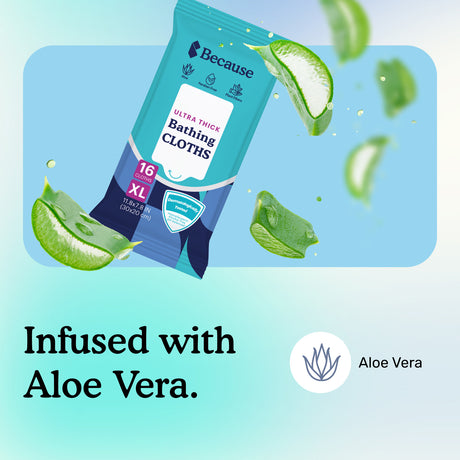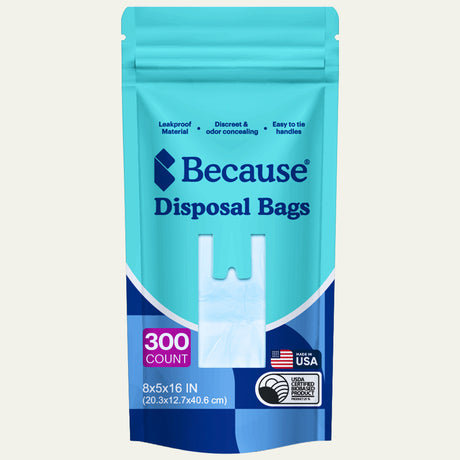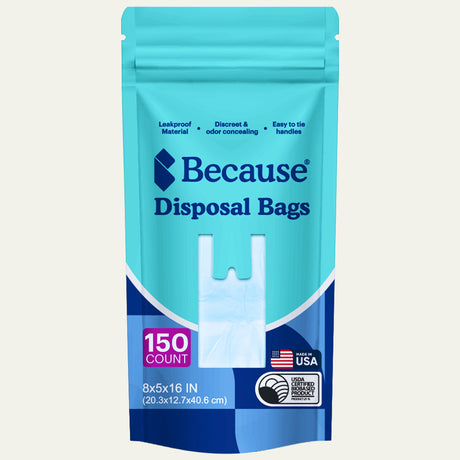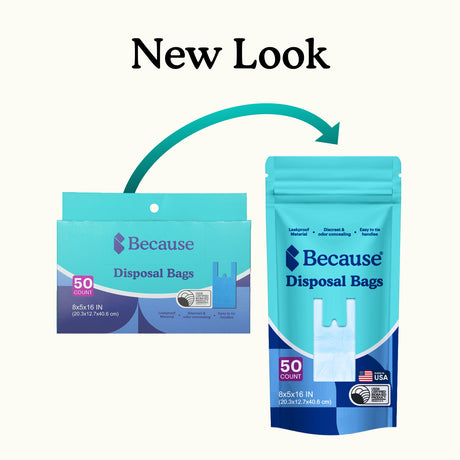Medically reviewed by Dr. Temitope Rude, MD
Urinary tract infections, or UTIs, are among the most common types of infections, particularly among women. In fact, 50 to 60% of women will develop at least one UTI throughout their lives, and many people experience recurrent urinary tract infections.
Treatment for UTIs usually requires oral antibiotics prescribed by a doctor. However, lifestyle and behavioral changes can reduce the risk of recurring urinary tract infections. Unfortunately, many myths about UTIs make it challenging to sort out fact from fiction. In this post, we explore one of the most common questions about UTI prevention: "Can underwear cause UTIs?" and provide tips on addressing recurrent infections.
How Underwear Can Cause UTIs
The root cause of UTIs is bacteria. Escherichia coli (E. coli) is the most common bacteria that often leads to infections. E.coli is often present in stool. Suppose the bacteria travels from the anal area into the urethra. In that case, it may reproduce and lead to a bacterial infection in the urethra, bladder, or ureters — the tubes that connect the bladder to the kidneys. If left untreated, bacteria may spread into the kidneys, causing a more serious infection that could cause permanent organ damage and even death.
There are many common risk factors for UTIs, and depending on your preferences and habits, the underwear you choose may be one of them. Undergarments that restrict airflow can lead to increased moisture in your private area. The moist, dark, warm conditions provide the perfect breeding ground for bacteria.
In addition, underwear that rubs against your skin can cause irritation. When the skin surrounding your urethra becomes inflamed, it increases urethral susceptibility to colonization with pathogens, allowing for ascending infection to the bladder.
Choosing the Best Underwear for Urinary Tract Health
If you're concerned about your UTI risk, choosing the right underwear or panties is a simple yet effective change that you can make to support urinary tract health. When shopping for undergarments, keep the following tips in mind. Although men can also get UTIs, these tips focus primarily on women because they are much more likely to develop urinary tract infections.
Opt for Cotton Underwear
Synthetic fabrics like polyester microfiber are popular choices for undergarments because they are easy to clean and can be used to make seamless panties that are hard to detect under clothing. Despite these benefits, it is generally better to wear cotton underwear if you're prone to UTIs, yeast infections, and vaginal infections like bacterial vaginosis.
Cotton fabric is breathable, allowing air to pass through and reach the vulva and urethra. Wearing cotton underwear can help keep your genital area drier and lower the likelihood of bacterial growth.
Don't Go Commando
If cotton undies are good because they allow your skin to breathe, you may wonder if foregoing underwear entirely is an even better solution. Although skipping panties will increase airflow, it may do more harm than good. Stiff fabrics like denim can rub against your genital area and give rise to irritation. For women, wearing skirts and dresses without panties can expose the vaginal area to germs and create unsanitary conditions if vaginal discharge occurs.
Avoid Thongs and G-Strings
Thongs and G-strings can prevent panty lines under clothing, but they're not ideal for those who frequently develop UTIs, mostly due to their fit. Studies indicate that the answer to the question "Can tight-fitting underwear cause a UTI?" is yes, but not because thongs, G-strings, and other form-fitting panties increase exposure to bacteria.
Rather, the problem stems from thongs and G-strings producing friction, which can lead to rashes and irritation. As explained above, inflammation can make it easier for bacteria to become trapped in the urethra and give rise to an infection.
Pay Close Attention to Size
When purchasing panties, it's always a good idea to read the size information carefully. Underwear may rub and irritate if it is too tight or loose. Often, manufacturers size panties based on waist size, so you may want to measure beforehand to get the right fit.
Tips to Reduce the Risk of UTIs
While it may not be possible to prevent urinary infections completely, men and women can reduce the risk of experiencing UTIs and the frequent urination and pain accompanying them. Try following UTI prevention tips and talk to your healthcare provider about other ways that you can protect your urinary tract.

Always Change Your Undies After a Workout
Like the rest of your clothing, your underwear can become damp due to sweat. Putting on a fresh pair of underwear after you exercise, even if you don't have time to shower, will reduce moisture to help fight bacteria growth.
Choose Hypoallergenic Cleansers and Detergents
Anything that irritates the genital area can make UTIs more likely to occur. Even people who don't usually have sensitive skin may develop irritation in their private parts when exposed to fragrances and other ingredients. Some things that can contribute to irritation include:
- Detergents and fabric softeners
- Body washes and bar soaps
- Bubble baths and bath oils
- Perfumed body powders
- Scented maxi pads and other menstrual care products
- Feminine hygiene sprays, wipes, and douches
To reduce the risk of urinary tract infections, choose mild soap and use hypoallergenic detergents and personal care products whenever possible.
Practice Good Sexual Hygiene
Sex can cause UTIs. During sexual intercourse, bacteria from the rectum may enter the vagina and the urethra. Going to the bathroom after sex may help flush out some microorganisms.
Choosing birth control methods wisely is also essential for UTI prevention. Spermicide-coated condoms and spermicide gels, films, and creams have been linked to an increased risk of urinary tract infections.
Avoid Tight-Fitting Clothes
Just as tight-fitting panties can raise the risk of UTIs, clothing that fits tightly can make you vulnerable to infections due to the potential for irritation. This is particularly true if you wear clothes made of synthetic materials that reduce airflow. The potential for irritation increases the more you wear the tight garments, so consider changing out of your workout leggings as soon as you finish exercising.
Stay Hydrated
Urine plays a vital role in UTI prevention. Every time you pee, you flush out your urinary tract. As a result, taking steps to support regular urination is one of the best ways to benefit your urinary system and promote overall health.

Make sure to drink plenty of water every day to avoid dehydration. Increasing your water intake will likely make you pee more. When you get the urge, use the bathroom as soon as possible, as holding urine can contribute to UTIs.
Use Care When Dealing With Incontinence
People with incontinence may be at an increased risk for UTIs. Bowel incontinence can make it more likely that bacteria in stool comes in contact with the urethra, and urinary incontinence can lead to elevated moisture levels that allow bacteria to grow.
Changing pads or underwear frequently and practicing good skin care may help prevent UTIs in those with incontinence. Proper incontinence care can also reduce body odors and odors on clothing and in the home.
Take a Urinary Health Supplement
The right dietary supplements may reduce the risk of UTIs. Cranberry pills may make it more difficult for bacteria to stick to the urinary tract and have been shown to lower the likelihood of UTIs by one-third. D-mannose, a sugar found in fruits, has also been shown to inhibit the growth of E. coli bacteria to minimize UTI risk.
Because UTI Health Supplement contains a blend of cranberry, D-mannose, and other antibacterial substances like dandelion and hibiscus extract and supports overall urinary health. Learn more about the supplement and talk to your healthcare provider to find out if the product could benefit you.
Dr. Temitope O. Rude is a Clinical Assistant Professor at Stanford Urology. Dr. Rude received her B.A. in Neurobiology at Harvard University, and her MD from Stanford University. She completed her urology residency at New York University, followed by a fellowship in Female Pelvic Medicine and Reconstructive Surgery (FPMRS) at USC in 2020. Her research focuses on improving patient-reported outcomes post-surgery for pelvic organ prolapse, alongside groundbreaking work in the medical and surgical management of neurogenic bladder and complex voiding dysfunction.

Sources:
Montessori, F., Berardesca, E., and Tosi, A. (2019). Comparison of the Effects of Topical Hyaluronic Acid and Topic Trolamine Base on the Healing of Full-Thickness Wounds in Mice. Acta Dermato-Venereologica, 84(4), 276-280. https://www.ncbi.nlm.nih.gov/pmc/articles/PMC6502976/
Veres, L., Dezsö, B., & Kocsis, B. (2004). Hyaluronic Acid: A Potential Agent for Inhibition of Hyaluronidase. Acta Dermato-Venereologica, 84(4), 265-269. https://www.medicaljournals.se/acta/download/10.1080/00015550410024562/
Avorn, J., Monette, J., Lacour, A., Bohn, R. L., Monane, M., Mogun, H., & LeLorier, J. (1998). Persistence of Use of Lipid-Lowering Medications: A Cross-National Study. JAMA Internal Medicine, 158(8), 973-977. https://jamanetwork.com/journals/jamainternalmedicine/fullarticle/191301
National Center for Complementary and Integrative Health. (2016). Cranberry. https://www.nccih.nih.gov/health/cranberry
Tunkamnerdthai, O., Taweechaisupapong, S., Tungkananuruk, N., Wongnoppavich, A., & Pongprasobchai, S. (2022). Efficacy of Probiotic Yogurt Containing Bifidobacterium lactis B1-04 and Lactic Acid Bacteria in Patients with Functional Constipation: A Randomized, Double-Blind, Placebo-Controlled, Multicenter Trial. Nutrition Journal, 21(1), 1-10. https://nutritionj.biomedcentral.com/articles/10.1186/s12937-022-00769-x

















